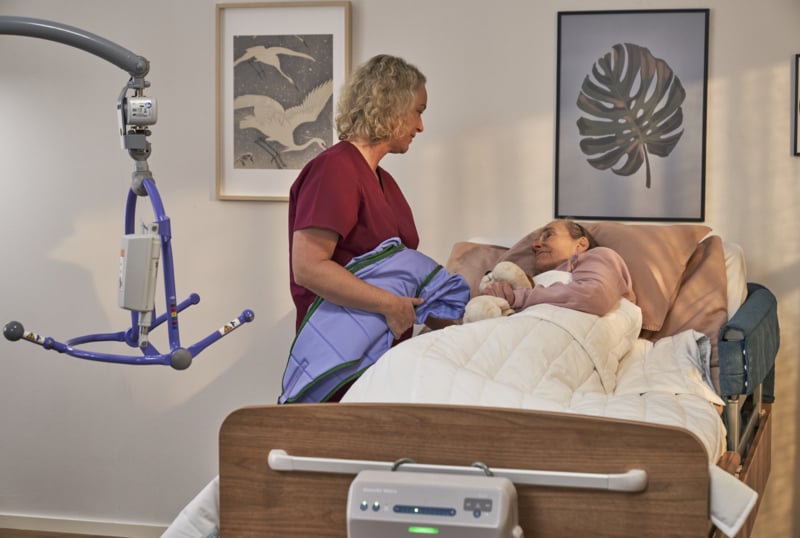How leading LTC facilities are reducing pressure injuries and staff injuries, without compromising resident dignity
Nursing homes and assisted living facilities are under increasing pressure to improve clinical outcomes while maintaining a high standard of resident dignity and staff safety. With rising acuity levels, workforce shortages, and regulatory scrutiny, many administrators are asking: How can we do more with less—without compromising care?

Across the US, forward-thinking LTC providers are adopting integrated approaches that reduce pressure injuries, prevent caregiver injuries, and create safer, more dignified environments for residents. Here’s how they’re doing it.
1. Pressure injury prevention starts with the right surface strategy
According to the CDC, 1 in 10 nursing home residents will develop pressure injuries—a preventable condition that can lead to serious infection and even death.1
Facilities that have successfully reduced incidence rates are moving beyond reactive treatment and investing in proactive surface strategies.
- Foam-based solutions like Simulflex® offer consistent pressure redistribution across bed and chair, supporting continuity of care.
- Adaptable alternating pressure systems like AtmosAir® Velaris provide alternating pressure therapy when needed, and reactive support when not—ideal for facilities managing diverse risk profiles.
- Microclimate coverlet like Skin IQ® help reduce friction, shear, and heat at the skin-surface interface, supporting skin integrity and comfort.
These facilities are also training staff to focus on prevention strategies and recognize early signs of skin breakdown.
2. Safer patient handling protects caregivers and residents
Caregivers in LTC facilities experience one of the highest rate of musculoskeletal injuries in healthcare. For employees who provided direct patient care, 59% of the injuries were attributed to patient-handling activities such as repositioning, transferring, preventing a fall and assisting a resident during a procedure.2
- Floor and ceiling lifts reduce strain during transfers and repositioning.
- Sit-to-stand devices like Sara® Flex allow a single caregiver to assist residents safely and comfortably.
- Outcome-based programs like Arjo MOVE® help facilities map risk areas and implement equipment and workflow changes that guarantee injuries reduction by 60%.
These solutions not only protect staff—they also enhance resident dignity by enabling smoother, more respectful transfers.
3. Dementia-driven design makes a difference
Over 45% of nursing homes residents are diagnosed with Alzheimer disease or other dementias.3 Facilities leading the way in LTC care are investing in dementia-friendly environments and resident-centered equipment. Beds like Evenda® Sereno feature low height, simplified controls, and homelike aesthetics designed to help ease resident comfort. Therapeutic seating like Atlanta™ supports individuals with involuntary movements while reducing fall risk.
These design choices aren’t just aesthetic—they’re clinical. They reduce agitation, support independence, and improve quality of life.
No compromise
Reducing pressure injuries and caregiver injuries doesn’t require compromise—it requires strategy. By combining the right equipment, training, and design principles, LTC facilities can create environments that are safer, more efficient, and more dignified for everyone involved.
Download the long-term care brochure
Explore our full portfolio of solutions for nursing homes and assisted living communities.
Talk to an Arjo expert
Ready to address these challenges in your facility? Connect with an Arjo representative to explore tailored solutions.
References:
- https://nursing.duke.edu/news/preventing-nursing-home-pressure-ulcers#:~:text=Looking%20Beneath%20the%20Skin%20to%20Prevent%20Nursing%20Home%20Pressure%20Ulcers,February%2012%2C%202024 "Looking Beneath the Skin to Prevent Pressure Ulcers"
- Totzkay, DL. "Multifactorial Strategies for Sustaining Safe Patient Handling and Mobility". Crit Care Nurs Q, 2018. 41(3): p. 340-344
- https://www.cdc.gov/nchs/npals/webtables/overview.htm (Table 4)